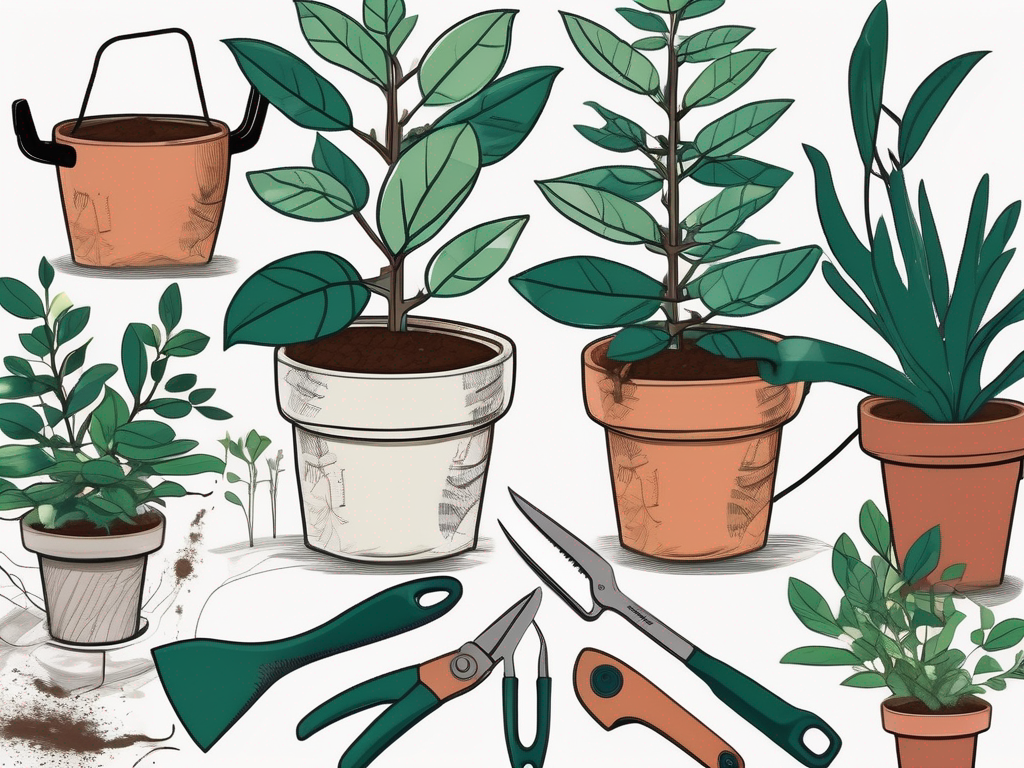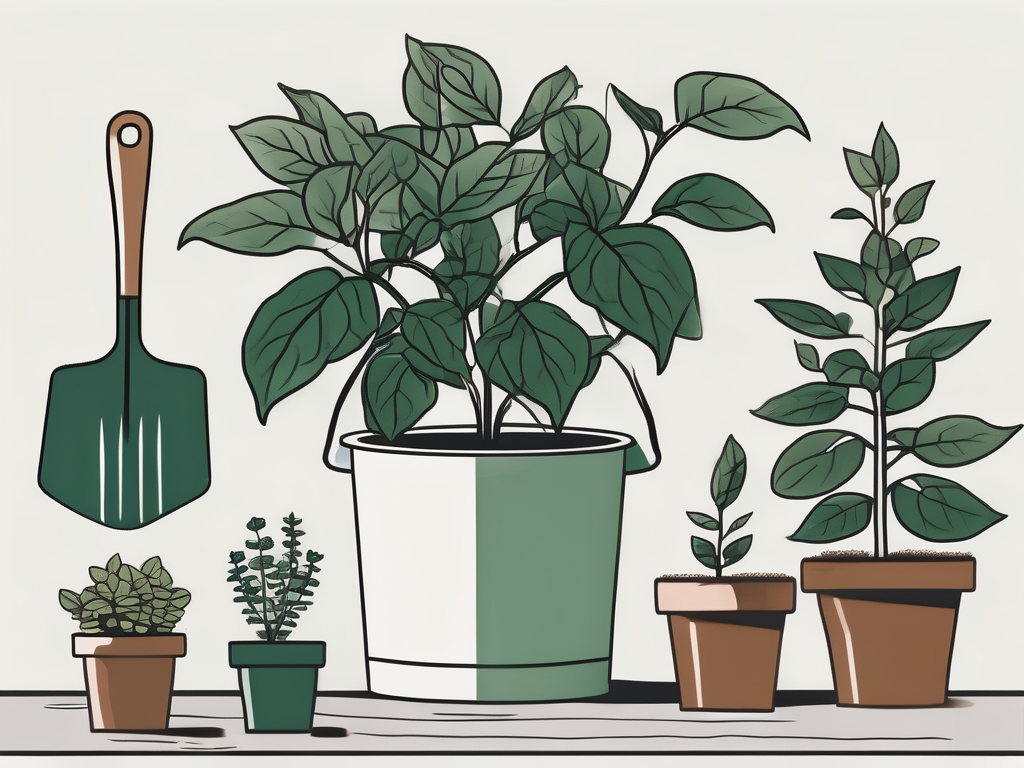
Have you ever looked at your Song of India plant and thought about how great it would be to have a few more of them around your home? Well, you're in luck! Propagating this beautiful plant is not only possible but also a fun and rewarding project that can lead to a lush indoor jungle. With its striking green and yellow leaves, the Song of India, or Dracaena reflexa, is a perfect candidate for propagation.
In this article, we'll walk you through the steps to successfully propagate your Song of India plant. We'll cover everything from gathering the necessary tools to understanding the different propagation methods and dealing with any hiccups along the way. So, grab your gardening shears, and let's get started on expanding your plant family!
Understanding Your Song of India Plant
Before you start snipping away, it's essential to understand the Song of India plant's basic characteristics. Dracaena reflexa is a tropical plant known for its vibrant leaves and easygoing nature. It's native to Madagascar and other Indian Ocean islands, which means it thrives in warm, humid environments.
This plant can adapt to various light conditions, but it prefers bright, indirect sunlight. If you notice the leaves losing their variegation, it might be a sign that your plant needs more light. Conversely, direct sunlight can scorch the leaves, so it's all about finding that sweet spot.
In terms of watering, the Song of India likes its soil to dry out slightly between waterings. Overwatering is a common mistake, so make sure the pot has proper drainage and avoid letting the plant sit in water. Understanding these basics will help you care for your plant and ensure successful propagation.
Choosing the Right Time for Propagation
Timing can be everything when it comes to propagation. The best time to propagate a Song of India plant is during its active growing season, typically in spring or early summer. During this time, the plant is naturally producing new growth, making it more receptive to propagation efforts.
While you can technically propagate at any time of the year, doing so during the growing season increases the chances of success. The plant is less likely to experience shock, and the cuttings will root more quickly. So, mark your calendar and plan to propagate when your plant is at its most active.
If you're unsure whether your plant is in its active growing phase, look for signs like new leaf growth or increased height. These indicators suggest that the plant is ready and eager to expand, making it the perfect time to start your propagation project.
Gathering Your Tools and Supplies
Now that you've decided it's the right time to propagate, let's gather the necessary tools and supplies. Having everything prepared in advance will make the process smooth and enjoyable.
- Sharp, clean pruning shears: You'll need a good pair of pruning shears to make clean cuts on your plant. Clean them with rubbing alcohol to prevent transferring any unwanted bacteria or fungus.
- Potting mix: Use a well-draining potting mix suitable for tropical plants. A mix containing peat, perlite, and vermiculite works well.
- Pots or containers: Choose small pots with drainage holes for your cuttings. Recycled containers, like yogurt cups, work just fine if they have holes for drainage.
- Rooting hormone (optional): While not strictly necessary, a rooting hormone can help encourage root growth and increase the success rate of your cuttings.
- Watering can or spray bottle: You'll need to keep your cuttings hydrated, so have a watering can or spray bottle on hand.
Once you've gathered all your tools and supplies, you're ready to start the propagation process. Having these items at your fingertips will make each step feel effortless, ensuring your cuttings have the best chance to thrive.
Selecting and Preparing Your Cuttings
With your tools ready, it's time to choose the right cuttings for propagation. Look for healthy, mature stems with several leaves. Avoid any stems that look damaged or diseased, as they are less likely to root successfully.
Once you've identified a suitable stem, use your clean pruning shears to make a cut just below a node, which is where the leaves attach to the stem. The cutting should be about 4-6 inches long. If the stem has any flowers or flower buds, remove them to allow the plant's energy to focus on root development.
After cutting, remove the leaves from the lower half of the stem. This step prevents the leaves from sitting in water or soil, which can lead to rot. If you're using rooting hormone, dip the cut end into the hormone powder now, tapping off any excess.
Preparing your cuttings with care sets the stage for successful propagation. By selecting healthy stems and taking the time to properly prep them, you're giving your new plants the best possible start.
Choosing Your Propagation Method
There are a few different methods to propagate your Song of India plant, each with its own set of advantages. Let's explore these options so you can choose the one that best fits your needs and circumstances.
Water Propagation
Water propagation is a popular choice for many plant lovers because it's simple and allows you to easily monitor root development. Place your prepared cutting in a glass or jar of water, ensuring that only the lower half is submerged. Change the water every few days to keep it fresh and free from bacteria.
Soil Propagation
If you prefer to go straight to soil, plant your cutting in a small pot filled with the prepared potting mix. Water the soil lightly and place the pot in a warm, bright location. Keep the soil moist but not soggy, and be patient as roots begin to form.
Direct Planting
Direct planting is another option, where you plant cuttings directly in their final pot. This method can save you a step, but it requires careful attention to watering and light conditions to ensure the cuttings take root successfully.
Whichever method you choose, remember that patience is key. Roots can take several weeks to develop, so keep an eye on your cuttings and provide the necessary care without rushing the process.
Caring for Your New Plants
Once your cuttings have successfully rooted, it's time to transition them to regular care. Here are some tips to help your new Song of India plants thrive:
- Light: Keep your new plants in a location with bright, indirect light. Avoid direct sunlight, which can scorch the leaves.
- Watering: Allow the top inch of soil to dry out between waterings. Be cautious not to overwater, as root rot is a common issue.
- Humidity: Dracaena reflexa enjoys higher humidity levels. Consider using a humidity tray or misting the leaves regularly to keep them happy.
- Fertilizer: Feed your plants with a balanced liquid fertilizer during the growing season to encourage healthy growth. Follow the package instructions for dilution and frequency.
By providing your new plants with the right environment and care, you'll ensure they grow strong and vibrant. Remember, each plant is unique, so observe their response to conditions and adjust care as needed.
Troubleshooting Common Propagation Issues
Propagation can sometimes come with its challenges, but don't worry—most issues can be resolved with a little patience and attention. Let's look at some common problems and how to address them.
Cuttings Not Rooting
If your cuttings aren't developing roots, check that they are getting enough light and warmth. You might also try switching to a different propagation method to see if that encourages root growth.
Leaves Turning Yellow
Yellow leaves can indicate overwatering or poor drainage. Ensure that your cuttings are not sitting in water and that the soil is appropriately drying out between waterings.
Stem Rot
Stem rot is often a sign of too much moisture. If you notice this issue, remove the affected parts and adjust your watering habits. Make sure that any remaining cuttings are in a well-draining medium.
By keeping an eye out for these issues and making necessary adjustments, you can improve your propagation success rate. Remember, it's all part of the learning process, and each attempt brings valuable experience.
Integrating Your New Plants into Your Home Decor
With your new Song of India plants ready to go, it's time to think about how to incorporate them into your home decor. This plant's striking foliage can add a touch of elegance and vibrancy to any room.
Consider placing your plants on a windowsill or shelf where they can catch the light. Group multiple plants together for a more dramatic effect, or mix them with other species to create a dynamic, layered look.
Hanging planters can also be a fantastic option, allowing the Song of India's leaves to cascade down beautifully. This setup is especially effective in rooms with limited floor space.
However you decide to display your new plants, make sure they have enough light and space to grow. With a little creativity, your Song of India plants can enhance your living space and bring a bit of the outdoors inside.
Sharing the Love: Gifts and Plant Swaps
Now that you've successfully propagated your Song of India plants, why not share the love with friends and family? Giving a plant as a gift is a wonderful way to spread joy and greenery to those around you.
Consider potting up a few of your new plants in decorative containers and gifting them for birthdays, holidays, or just because. A well-cared-for plant is a thoughtful and lasting gift that can brighten anyone's day.
Alternatively, you might participate in a local plant swap. These events are a fantastic opportunity to trade plants with fellow plant lovers and expand your collection. You never know what new and exciting species you might discover!
Whether you're gifting or swapping, sharing your propagated plants is a delightful way to connect with others and cultivate a community of plant enthusiasts.
Final Thoughts
Propagating your Song of India plant is a rewarding journey that can lead to a more vibrant and green home. From selecting the right cuttings to caring for your new plants, each step brings you closer to expanding your indoor garden.
At Cafe Planta, we believe that plants have the power to bring people together and inspire us to connect with nature and each other. Whether you're an experienced plant parent or just starting out on your plant journey, we're excited to share our love of plants with you and help you create a beautiful, thriving plant collection in your home. If you have any questions or want to share your propagation success, feel free to email us or DM us on Instagram.












